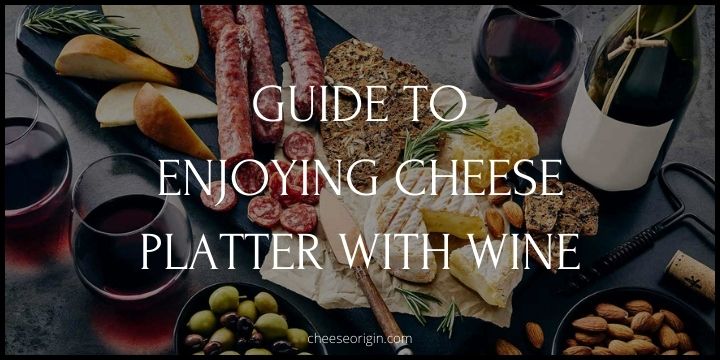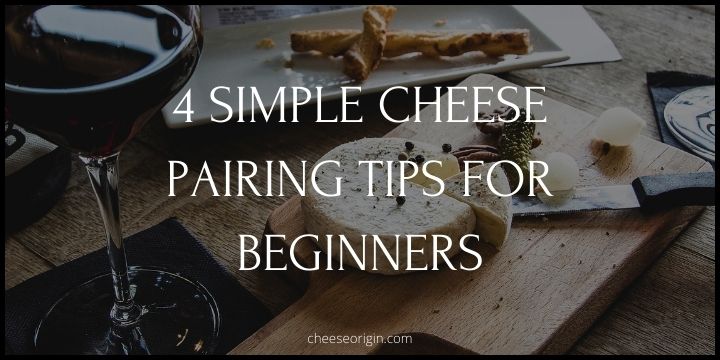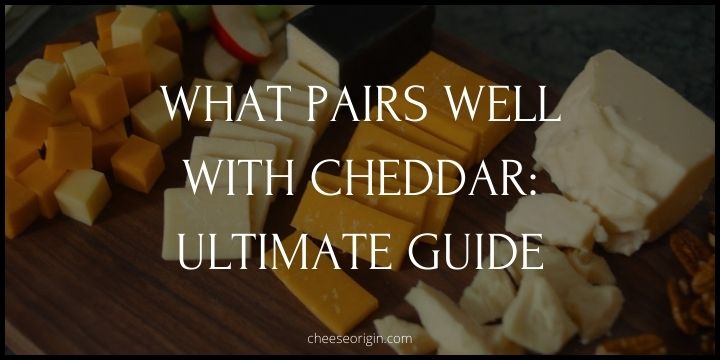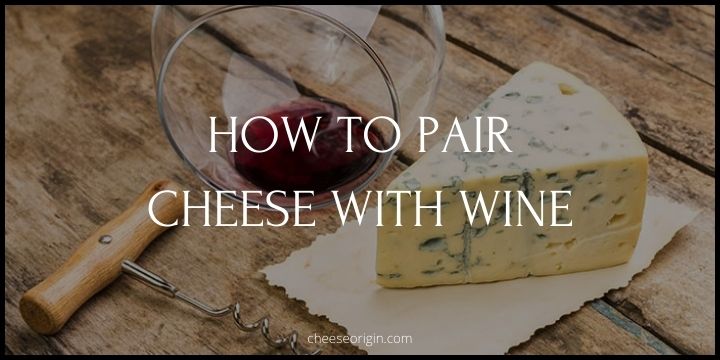Best Wine and Cheese Pairings: The Ultimate Guide

Welcome to our ultimate guide on the best wine and cheese pairings! There’s something inherently sophisticated and pleasurable about savoring a perfectly paired glass of wine with a delicious slice of cheese.
But if you’ve ever stood in the wine or cheese section of your local grocery store, you know the choices can be overwhelming. Cabernet or Chardonnay? Brie or Blue? And that’s before you even consider pairing them together!
In this guide, we’ll demystify the art of wine and cheese pairing, transforming it from an intimidating task into an enjoyable journey.
Whether you’re hosting a dinner party, planning a romantic evening, or simply indulging in a quiet night in, we’ve got the perfect pairings to elevate your experience.
So sit back, pour yourself a glass, and let’s embark on this gastronomic adventure together.
>> Also read: Top 10 Champagne & Cheese Pairings to Try at Least Once
What Wine Goes Well with Cheese? The Classic Pairings
Let’s start with the basic. Below are some of the best classic wine and cheese pairings:
| Wine | Cheese | Description |
|---|---|---|
| Sauvignon Blanc | Goat Cheese | The bright acidity and crispness of Sauvignon Blanc perfectly balance the tangy freshness of goat cheese. |
| Chardonnay | Brie | The buttery and creamy notes in both the wine and cheese make this a harmonious pairing. |
| Cabernet Sauvignon | Aged Cheddar | The full-bodied, rich flavors of Cabernet Sauvignon stand up well to the sharp, strong flavors of aged cheddar. |
| Pinot Noir | Gruyère | The light, fruity notes of Pinot Noir complement the nutty, slightly sweet flavors of Gruyère. |
| Riesling | Blue Cheese | The sweet, fruity flavors of Riesling counterbalance the salty, pungent flavors of blue cheese. |
| Port | Stilton | The sweet, fortified character of Port is a classic match for the strong, tangy flavors of Stilton. |
| Merlot | Gouda | The soft tannins and dark fruit flavors of Merlot pair well with the creamy, caramel-like flavors of aged Gouda. |
| Champagne | Camembert | The high acidity and bubbles in Champagne cut through the rich, creamy texture of Camembert. |
Is Red or White Wine Better with Cheese?
The debate between red or white wine with cheese is an age-old one. It’s a common belief that red wine is the best choice for cheese, but we many suggest otherwise.
White wine is generally easier to pair with cheese. The truth is, white wine enhances the flavors of cheese better than red.
However, whether red or white wine is better with cheese really depends on the individual cheese and wine.
>> Also read: A Comprehensive Guide to Enjoying Cheese Platter with Wine
The Ultimate Guide for Red Wine and Cheese Pairings

1. What Kind of Cheese Goes with Red Wine?
- Cabernet Sauvignon: This full-bodied red wine pairs well with aged cheeses like Cheddar, Gouda, or Blue Cheese.
- Merlot: Merlot’s soft tannins and dark fruit flavors work well with Gouda, Parmesan, and Camembert.
- Pinot Noir: This lighter red wine can be paired with Brie, Camembert, Feta or Goat cheese.
- Zinfandel: The robust, fruity notes of Zinfandel complement the strong flavors of blue cheeses, Gorgonzola, or Aged Cheddar.
- Syrah/Shiraz: This rich, spicy red wine pairs well with flavorful, hard cheeses like Aged Gouda or Smoked Cheddar.
- Chianti: This Italian red wine is a great match for Parmesan, Pecorino Romano and other hard Italian cheeses.
2. Why Does Red Wine Go Well with Cheese?
The pairing of red wine and cheese is a time-tested tradition that comes down to a combination of science and personal preference.
| Factors for Pairing | Description |
|---|---|
| Balance of Flavors | The tannins in red wine, which can taste bitter or astringent, are balanced out by the fat content in cheese. This makes the wine seem smoother and less harsh. |
| Complexity and Depth of Flavor | Both red wine and cheese have complex flavor profiles that can complement each other. A full-bodied red wine can stand up to a strong, aged cheese, while a lighter red might pair better with a milder cheese. |
| Texture Complement | The rich, creamy texture of many cheeses contrasts nicely with the more liquid consistency of wine. This contrast can enhance the enjoyment of both. |
| Taste Interaction | When consumed together, wine and cheese can interact in ways that alter and often enhance their individual flavors. For example, a sip of wine after a bite of cheese can bring out unexpected notes in both. |
| Tradition and Experimentation | The pairing of red wine and cheese has a long history in many cultures, particularly in Europe. Over time, certain pairings have become traditional because they’ve been found to work well together. However, there’s also plenty of room for experimentation to find new and exciting combinations. |
3. Six Simple and Easy Tips on How to Pair Red Wine with Cheese
- Balance the Intensity: Pair bold red wines with strong cheeses and lighter red wines with milder cheeses. For example, a full-bodied Cabernet Sauvignon pairs well with a strong, aged cheddar, while a lighter Pinot Noir might pair better with a milder Brie.
- Consider Texture: The texture of the wine and cheese can play a significant role in how well they pair. A rich, creamy cheese can balance out the tannins in a robust red wine, making the wine seem smoother.
- Serve at Proper Temperatures: Cheese should be served at room temperature, and red wine should be slightly below room temperature. This allows both the wine and cheese to express their full range of flavors.
- Try Regional Pairings: Often, cheeses and wines from the same region pair well together. For example, a French Brie might pair well with a French Burgundy.
- Start Mild, Finish Strong: When enjoying multiple cheeses and wines, start with the lightest and most delicate flavors and work your way up to the boldest and most full-bodied. This will prevent the stronger flavors from overwhelming the more subtle ones.
- Remember the Crackers: Neutral-flavored crackers or bread can provide a palate cleanser between different wine and cheese pairings, helping to reset your taste buds.
The Ultimate Guide for White Wine and Cheese Pairings

1. What Kind of Cheese Goes with White Wine?
- Sauvignon Blanc: This crisp and bright wine pairs well with goat cheese, as well as brick, Cheddar, Gouda, Havarti, Monterey Jack, and Colby Jack cheeses.
- Chardonnay: This full-bodied white wine is a good match for creamy Camembert, Brie, or other soft, surface ripened cheeses. It also shines with semi-soft cheeses like Emmenthal, Gruyère, and Comté when oaked.
- Riesling: This sweet and fruity wine pairs well with Brie and can balance the salty, pungent flavors of blue cheese.
- Pinot Gris/Pinot Grigio: These wines are versatile and can pair with a variety of cheeses.
2. Why Does White Wine Go Well with Cheese?
| Factors for Pairing | Description |
|---|---|
| Acidity Balance | White wines are often high in acidity, which can cut through the creaminess and fat of cheese. This balance allows the flavors of both the cheese and the wine to shine through without overpowering each other. |
| Complementary Flavors | Many white wines have fruit, floral, or mineral notes that can complement the flavors in certain cheeses. For example, a crisp Sauvignon Blanc with its citrusy notes might pair well with a tangy goat cheese. |
| Versatility | White wines are generally more versatile than reds when it comes to cheese pairing. They can pair well with a wide variety of cheeses, from soft and creamy to hard and aged. |
| Temperature Compatibility | Both white wines and cheeses are typically served chilled or at room temperature, making them compatible from a serving standpoint. |
| Sweetness Balance | Sweeter white wines, like Rieslings or Moscatos, can balance the saltiness of certain cheeses, creating a pleasing sweet-salty flavor combination. |
3. Six Simple and Easy Tips on How to Pair White Wine with Cheese
- Balance the Intensity: Pair light white wines with mild cheeses and more full-bodied white wines with stronger cheeses. For example, a light Pinot Grigio pairs well with a soft goat cheese, while a more robust Chardonnay might pair better with an aged Gouda.
- Consider Acidity: White wines often have high acidity that can cut through the creaminess of cheese, helping to balance out the flavors. Look for cheeses that can stand up to this acidity without being overwhelmed.
- Experiment with Flavors: Don’t be afraid to experiment with different combinations to find what you like best. Everyone’s palate is different, and you might discover a unique pairing that works perfectly for you.
- Use a Cheese Board: When serving multiple types of cheese, consider using a cheese board. This allows your guests to try different wine and cheese pairings and discover their own favorites.
- Trust Your Palate: The most important rule in pairing wine and cheese is to trust your own taste. If you enjoy a particular combination, then it’s a good pairing for you.
- Have Fun: The process of pairing wine and cheese should be enjoyable. So relax, experiment, and have fun discovering new combinations!
Frequently Asked Questions
1. What Goes First: Cheese or Wine?
Our recommendation is to start with the wine first. The characteristics of the wine often dictate which type of cheese will pair best.
2. Is wine and cheese before or after dinner?
Wine and cheese can be enjoyed both before or after dinner, depending on personal preference and cultural practices.
In many Western cultures, it’s common to have a cheese and wine as an appetizer or starter before the main meal. This is often served during a cocktail hour or as part of a pre-dinner socializing event. The idea is to whet the appetite for the meal to come.
In France and some other European countries, cheese is traditionally served after the main course but before dessert, often accompanied by wine. This is known as the ‘cheese course’ and is considered an essential part of a formal meal.
The truth is, there are no hard and fast rules. You can serve wine and cheese whenever it best suits your meal plan or event. It can even serve as the main event of a casual gathering or party.
Conclusion
The art of pairing wine with cheese is a journey of discovery that can delight your senses and transform your dining experiences. From the zesty acidity of a Sauvignon Blanc paired with tangy goat cheese to the sweet balance of a Riesling with a salty blue cheese, the combinations are endless and endlessly fascinating.
Remember, while we’ve provided a guide to help you navigate these pairings, there are no strict rules.
The beauty of wine and cheese pairing lies in its subjectivity. What works for one person might not work for another, and that’s perfectly okay. The most important thing is to trust your palate and enjoy the process of exploration.
So, the next time you find yourself in the cheese aisle or browsing through a wine store, don’t be afraid to try something new. Pick up that unfamiliar bottle of white wine or that exotic looking cheese. You never know, you might just stumble upon your new favorite pairing.
Keep experimenting, keep tasting, and remember that the world of wine and cheese pairing is as broad and diverse as the varieties of wine and cheese themselves.
Let this guide be your starting point, and let your palate lead the way. Cheers to the wonderful world of wine and cheese pairing!
Also read:
- The Science of Cheesemaking: A Journey from Milk to Artisanal Delight
- What Kind of Cheese is Used on Nachos?
- What Pairs Well with Cheddar: The Ultimate Guide
- 12 Most Popular Cheeses in the World
- What Fruit Goes on a Charcuterie Board?
- 11 Best Crackers that Pair Well with Cheese
- Best Cheeses to Elevate Your Mac & Cheese: An Ultimate Guide





